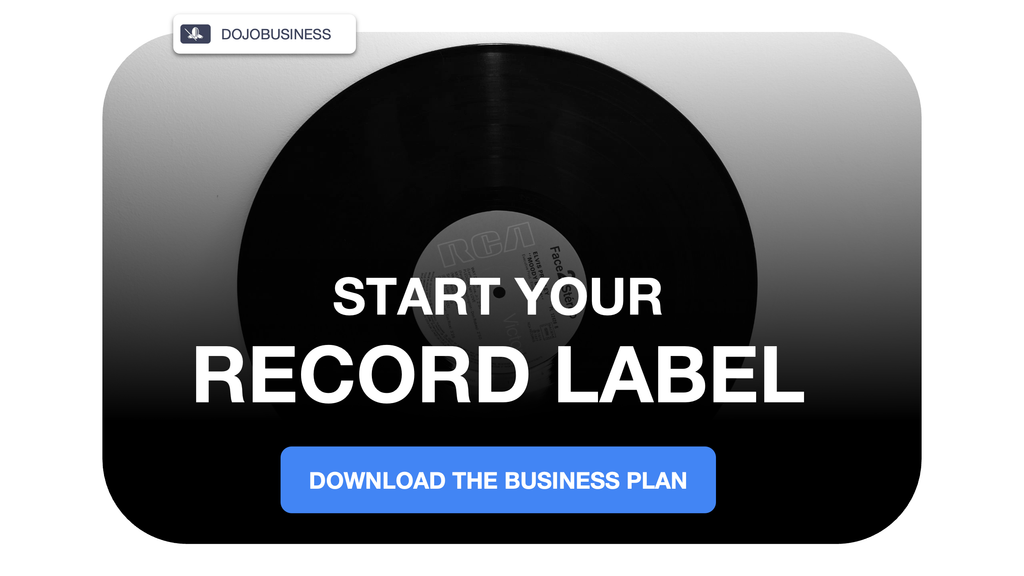This article provides a comprehensive guide to understanding the profit margin of a record label, detailing its revenue streams, costs, and strategies for profitability. If you're starting a record label, this is an essential read to help you understand what to expect in terms of financial outcomes.
The revenue of a record label varies greatly depending on the size, scope, and artist success. On average, a smaller label might generate between $60,000 to $500,000 annually, while major labels can generate much higher figures. Understanding these numbers will help set realistic expectations.
Here’s a detailed breakdown of a record label’s key revenue sources, average costs, and profit margin considerations. Keep reading to understand how much revenue you can expect per artist, release, and year.
| Revenue Source | Average Contribution | Details |
|---|---|---|
| Streaming | 60–70% | Streaming platforms like Spotify and Apple Music contribute the largest share of revenue, but per-stream payouts are low, requiring millions of streams to generate significant revenue. |
| Merchandise | 10–15% | Merchandise is a crucial revenue stream, especially for touring artists, but the label often shares profits with the artist or merch company. |
| Sync/Licensing | 5–10% | Sync deals (like music in TV shows, ads, or films) bring in steady income, though it’s less predictable than streaming or sales. |
| Touring | 5–15% | Revenue from live events varies greatly, often being outside the label’s direct income but is a key component of many artist deals. |
| Publishing | 10% or less | Publishing royalties include mechanical and performance royalties, but the share the label keeps is often small unless it controls publishing rights. |
How much revenue does a record label make per artist, per release, and per year?
Revenue varies significantly depending on the artist's popularity and the label’s scale. On average, small labels generate $5,000 to $10,000 per artist per release, with annual revenue between $60,000 to $500,000, which translates to about $1,000 per artist per month.
What are the main revenue streams for a record label, and how much does each contribute?
Streaming is the largest revenue source for most labels, often contributing 60–70% of total earnings. Merchandising, licensing, and live events also add significant income, but these percentages vary widely depending on the artist's deals and popularity.
What are the average per-unit earnings from digital streams, physical sales, and downloads?
Per-unit earnings can differ by platform. For digital streams, labels typically earn $0.002 to $0.013 per stream. For physical sales like CDs, they keep about $4–$7 per unit, while digital downloads typically bring in $0.60–$0.70 per sale.
How much does it cost to produce a single song or album?
Production costs for a single song can range from $300 to $50,000 depending on the scale of the production. A typical album costs between $10,000 to $100,000 or more, with higher-end productions involving top-tier studios and marketing budgets.
What are the typical operating costs for a record label?
| Label Size | Monthly Cost (USD) | Yearly Cost (USD) |
|---|---|---|
| Small | $2,000–$10,000 | $24,000–$120,000 |
| Medium | $10,000–$50,000 | $120,000–$600,000 |
| Large | $50,000–$400,000+ | $600,000–$5M+ |
How do staff salaries, artist advances, and marketing budgets affect profitability?
Higher staff salaries and larger artist advances reduce profit margins but may help secure high-quality talent or hit records. Larger marketing budgets can help amplify an artist's success but come at a high cost.
What is the average gross margin for a record label?
Gross margins for streaming and digital sales typically range from 50–70%. However, merchandise and live event margins tend to be lower due to higher costs related to manufacturing and event management.
What does a profit margin represent, and how is it calculated?
Profit margin is the percentage of revenue that remains after all costs are subtracted. It is calculated using the formula: (Revenue - Costs) / Revenue * 100%. For record labels, profit margins can vary but typically range from 10–20% for smaller labels and 10–15% for major labels.
How do profit margins differ between independent and major labels?
| Aspect | Independent Labels | Major Labels |
|---|---|---|
| Gross Margin | 10–20% | 10–15% |
| Cost Structure | Lean, project-based | High fixed costs, large staff |
| Scale Impact | Margins increase with scale if overhead is controlled | Efficiency due to size, but also higher bureaucratic costs |
What strategies can labels use to improve profit margins?
- Diversify revenue streams through sync licensing, publishing, and artist management.
- Use social media and direct-to-fan marketing to lower promotional costs.
- Outsource non-core functions to save on overhead costs.
- Invest in catalog management to generate passive income through back-catalog licensing.
- Leverage technology and automation to streamline operations.
How does diversification into services like publishing, licensing, or artist management change a label’s profitability?
By expanding into services such as publishing and licensing, labels can reduce their dependency on fluctuating record sales and generate more stable, long-term revenue streams. Artist management also offers additional revenue and growth opportunities.
What is the realistic net profit margin range for record labels?
The net profit margin for a small label can range from 10–20% ($30,000–$80,000 annually), while medium-sized labels may see margins of 10–15% ($200,000–$600,000 per year). Major labels may have a net profit margin of around 10–15%, generating millions in profit each year.
Conclusion
This article is for informational purposes only and should not be considered financial advice. Readers are encouraged to consult with a qualified professional before making any investment decisions. We accept no liability for any actions taken based on the information provided.
Related Articles:


